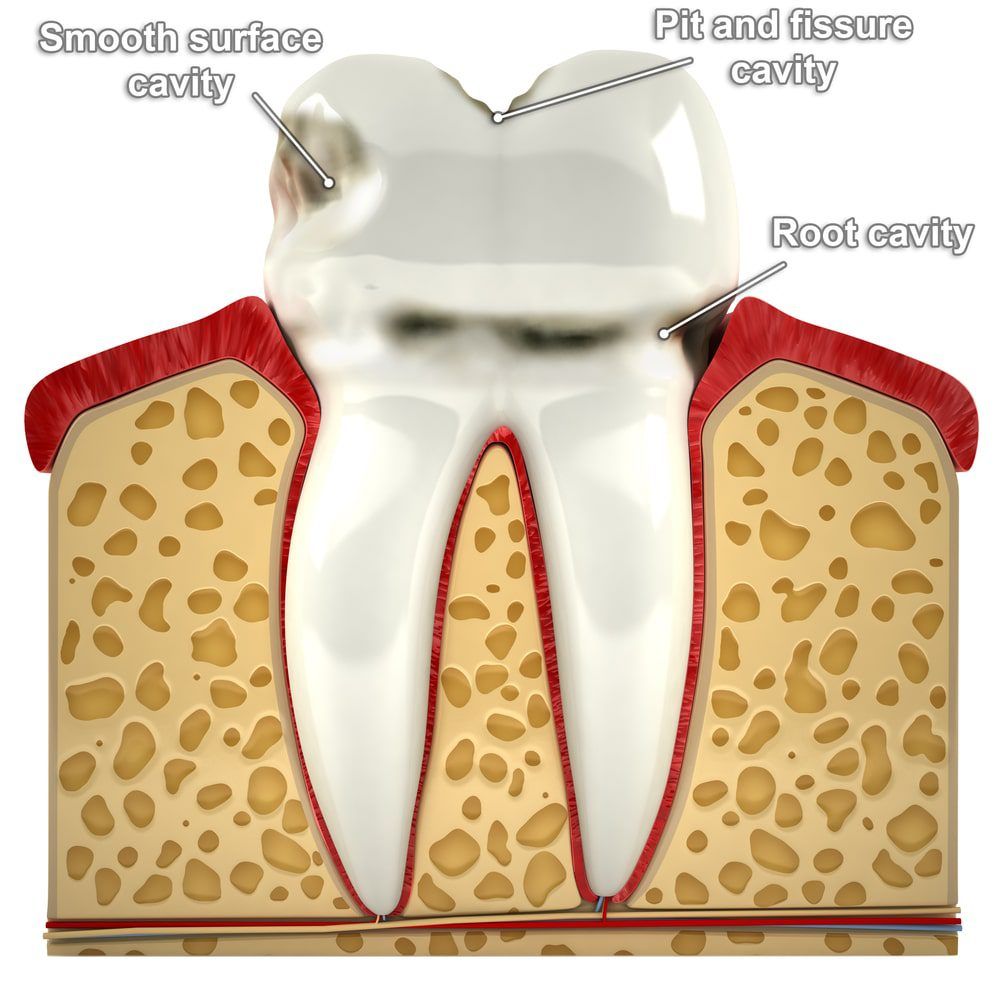Cavity At The Gumline

Cavities at the gumline, also known as gingival cavities, are a common yet often overlooked dental issue. These cavities form at the gumline, where the teeth and gums meet, and can be caused by a combination of factors, including poor oral hygiene, genetics, and certain medical conditions. If left untreated, cavities at the gumline can lead to more severe problems, such as gum disease, tooth loss, and even systemic health issues.
One of the primary causes of cavities at the gumline is the buildup of plaque and tartar. Plaque is a sticky film of bacteria that forms on the teeth, and if not removed regularly, it can harden into tartar, a hardened deposit that can only be removed by a dental professional. As plaque and tartar accumulate at the gumline, they can cause the gums to become inflamed and pull away from the teeth, creating pockets that can trap bacteria and food particles. This can lead to the formation of cavities, as the bacteria feed on the trapped particles and produce acid, which can damage the tooth enamel.
Risk Factors for Cavities at the Gumline

Several factors can increase the risk of developing cavities at the gumline. These include:
- Poor oral hygiene: Failing to brush and floss regularly can lead to the buildup of plaque and tartar, increasing the risk of cavities.
- Genetics: Some people may be more prone to cavities at the gumline due to their genetic makeup.
- Dry mouth: A lack of saliva can increase the risk of cavities, as saliva helps to neutralize acid and wash away bacteria and food particles.
- Certain medical conditions: Conditions such as diabetes, rheumatoid arthritis, and Sjögren’s syndrome can increase the risk of cavities at the gumline.
- Smoking and tobacco use: Smoking and using tobacco products can increase the risk of gum disease and cavities at the gumline.
Symptoms of Cavities at the Gumline

The symptoms of cavities at the gumline can vary, but may include:
- Tooth sensitivity: Pain or sensitivity when consuming hot or cold foods and drinks.
- Gum recession: The gums pulling away from the teeth, exposing the roots.
- Pus or discharge: The presence of pus or discharge around the affected tooth.
- Bad breath: Persistent bad breath or a bad taste in the mouth.
- Tooth discoloration: Discoloration or staining of the teeth.
Treatment Options for Cavities at the Gumline
Treatment for cavities at the gumline depends on the severity of the issue. In some cases, a dental filling may be sufficient to repair the cavity. However, if the cavity is more extensive, a root canal or even tooth extraction may be necessary. In addition to treating the cavity, a dental professional may also recommend:
- Professional cleaning: A deep cleaning to remove plaque and tartar from above and below the gumline.
- Fluoride treatment: A fluoride treatment to help strengthen the teeth and prevent future cavities.
- Gum grafting: A procedure to repair damaged gums and prevent further recession.
Step-by-Step Guide to Preventing Cavities at the Gumline
- Brush teeth at least twice a day with a fluoride toothpaste, paying special attention to the gumline.
- Floss at least once a day to remove plaque and food particles from between the teeth and below the gumline.
- Rinse with an antibacterial mouthwash to help kill bacteria and reduce inflammation.
- Attend regular dental checkups and cleanings to identify and treat any issues early on.
- Avoid sugary and acidic foods and drinks, which can contribute to the development of cavities.
Prevention and Maintenance
Preventing cavities at the gumline requires a combination of good oral hygiene practices and regular dental care. By brushing and flossing regularly, attending dental checkups, and avoiding sugary and acidic foods and drinks, individuals can reduce their risk of developing cavities at the gumline. Additionally, a dental professional may recommend:
- Desensitizing toothpaste: A toothpaste specifically designed to reduce tooth sensitivity.
- Mouthwash: An antibacterial mouthwash to help kill bacteria and reduce inflammation.
- Gum stimulators: Devices designed to stimulate the gums and improve blood flow.
What are the common signs of cavities at the gumline?
+Common signs of cavities at the gumline include tooth sensitivity, gum recession, pus or discharge, bad breath, and tooth discoloration.
How can I prevent cavities at the gumline?
+To prevent cavities at the gumline, brush and floss regularly, attend dental checkups, avoid sugary and acidic foods and drinks, and consider using a desensitizing toothpaste or mouthwash.
What are the treatment options for cavities at the gumline?
+Treatment options for cavities at the gumline depend on the severity of the issue and may include dental fillings, root canals, tooth extractions, professional cleanings, fluoride treatments, and gum grafting.
By understanding the causes, symptoms, and treatment options for cavities at the gumline, individuals can take proactive steps to prevent and address this common dental issue. Regular dental care, good oral hygiene practices, and a healthy diet can all contribute to a reduced risk of cavities at the gumline and a healthier, happier smile.

